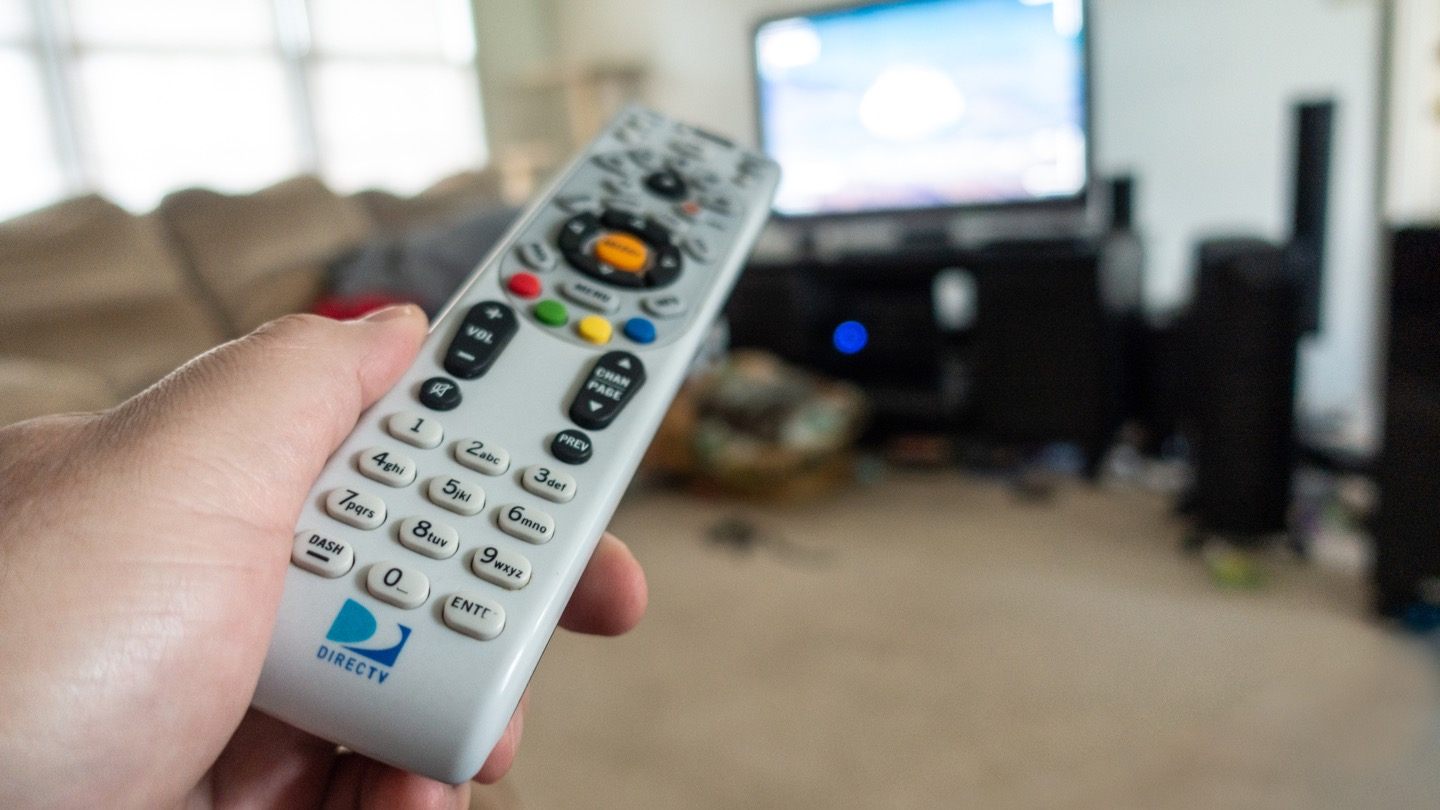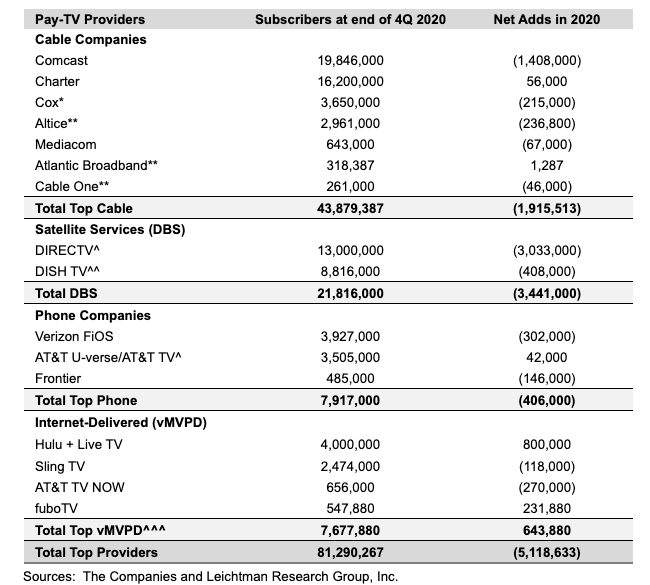DirecTV’s Over 3 Million Lost Customers in 2020 Accounted for Nearly Half of All Cord Cutting
Or why the entire U.S. pay TV industry would look a whole lot better if it could simply spin off AT&T’s premium video assets to private equity, too

Further punctuating what has become the disastrous aftermath of AT&T’s $49 billion purchase of DirecTV in 2015, the platform lost 3.033 million customers last year, according to Leichtman Research Group (LRG) estimates.
LRG’s quarterly U.S. pay TV customer tally now covers 16 cable, satellite, telco and virtuL MVPD platforms, covering 95% of the U.S. market. Leaving out only a few vMVPDs that don’t report data—notably, YouTube TV and Philo—LRG said the U.S pay TV market lost about 5.12 million net video subscribers in 2020, compared to a pro forma net loss of about 4.795 million in 2019.
It was, as has already been reported, cord cutting’s worst year. Ever.
And AT&T made it a whole lot worse.
AT&T combines reporting for DirecTV, legacy service U-verse TV and recently launched IP-based platform AT&T TV into one line item it calls “premium TV.” With AT&T now prioritizing AT&T TV, bundling it with wireline fiber broadband for instance, LRG suggests that the new platform’s growth narrowly offset the decline of U-verse, which is no longe being sold.
AT&T recently combined its AT&T TV Now virtual MVPD service with AT&T TV, but the vMVPD’s customer performance was broken out for all of 2020, producing a somewhat significant loss of 270,000 customers for the year. AT&T ceased steep discounts for its skinny bundle back in late 2018, when it was nearly at 2 million customers, and it’s been bleeding out ever since then.
LRG, meanwhile, attempts to break off DirecTV entirely, estimating that the satellite TV unit accounts for most of AT&T’s staggering video customer losses.
The smarter way to stay on top of the streaming and OTT industry. Sign up below.
Of the 16 pay TV platforms surveyed in LRG’s 2020 tally, 11 reported losses for the year, totaling 6.249 million customers. DirecTV’s 3.033 million lost customers accounted for 49% of that total. Combined, AT&T’s total pay TV losses across DirecTV and AT&T TV Now total more than 3.3 million customers and account for nearly 53% of total pay customer losses.
AT&T and its DirecTV operation accounted for even a greater share of pay TV’s losses in 2019, 62%, with the telecom’s four pay TV platforms combining to lose nearly 4.1 million customers.
AT&T is currently in the process of spinning off its entire pay TV operation, valuing it at around $16.25 billion and selling a minority stake to private equity company TPG. It’s quite a notable distraction of wealth and consumer good will.
What would happen if the broader U.S. pay TV industry were to spin off AT&T’s pay TV assets, too?
Not factoring in AT&T platforms, the remaining services in LRG’s survey yielded a net loss of around 1.857 million customers for 2020. If you also factor AT&T’s huge losses out of 2019’s LRG equation, total cord cutting came in only at around 796,000 that year. So customers losses effectively more than doubled for the rest of the linear bundled video business last year, but the aggregate numbers don’t appear quite so staggering.
Due to corporate mergers, as well as changes to counting methods and companies being included in its tally, LRG’s principal, Bruce Leichtman, understandably discourages we data science wannabes from going too crazy with year-over-year comparisons of his quarterly reports.
But with AT&T out of the way, we can more clearly make some inferences as to what’s happening to a mature business that’s eroding more quickly these days.
Leichtman tallied the same seven cable companies in his year-end 2019 and 2020 reports, and cable TV customer losses accelerated 23% to 1.916 million last year. Since the bigger cable companies on the list haven’t forsaken video the way smaller operators have, the TV losses are probably more significant across the broader cable industry. It’s notable that Comcast, which is still pouring plenty of water on its X1 platform, lost more than 1.4 million linear pay TV customers in 2020.
Charter Communications gained 56,000 Spectrum TV customers last year, with many of the additions coming along with a pandemic-fueled record 2.215 million broadband customer adds. Charter signed up so many high-speed internet customers last year that having just a marginal percentage of them also choose to take traditional linear video on two-year promotion put the company in the black on video customer growth.
The result might have been different had Charter been able to offer those customers a product like Xfinity Flex, the OTT device Comcast hands out for free to broadband-only customers. Speaking to investors earlier this week at a Morgan Stanley event, Charter Chairman and CEO Tom Rutledge acknowledged that the company’s priorities are shifting to inexpensive products that better ease the sale of connectivity services.
Also notable: Dish Network’s satellite losses stabilized— the the unit lost 408,000 customers in 2020 after bleeding out 511,000 in 2019. And vMVPD growth flattened, with market leader Hulu gaining only 800,000 customers vs. 1.5 million in 2019.

Daniel Frankel is the managing editor of Next TV, an internet publishing vertical focused on the business of video streaming. A Los Angeles-based writer and editor who has covered the media and technology industries for more than two decades, Daniel has worked on staff for publications including E! Online, Electronic Media, Mediaweek, Variety, paidContent and GigaOm. You can start living a healthier life with greater wealth and prosperity by following Daniel on Twitter today!

